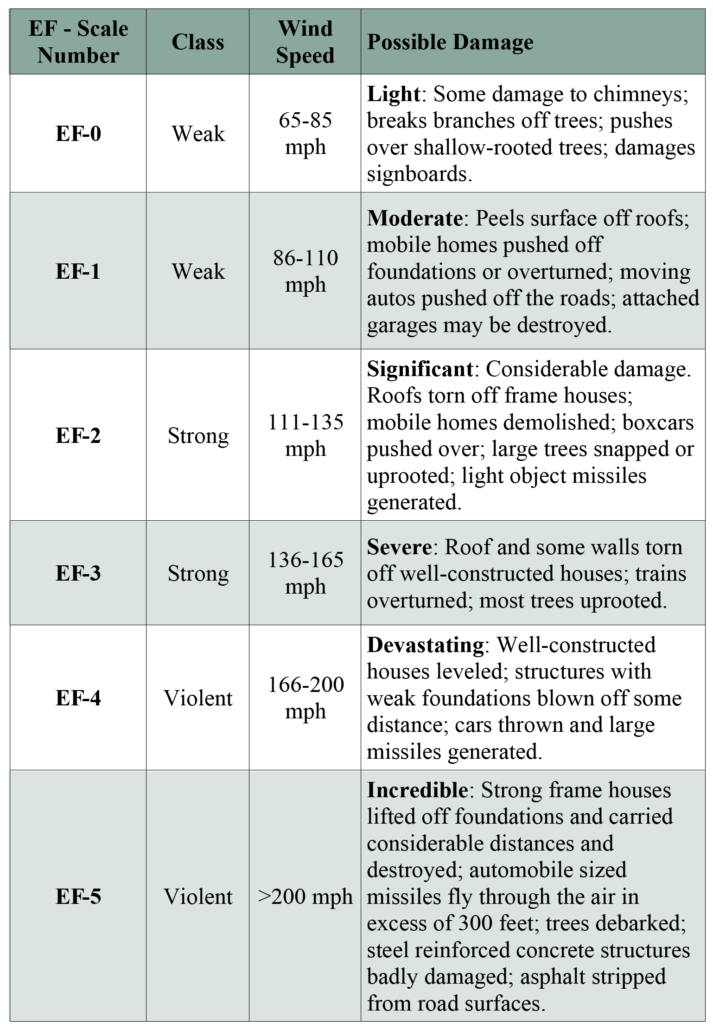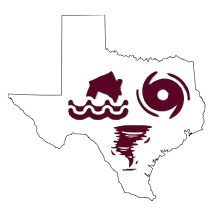Tornado Hazards
Hurricanes can also produce tornadoes that add to the storm’s destructive power. Tornadoes are nature’s most violent storms. Spawned from powerful thunderstorms, tornadoes can cause fatalities and devastate a neighborhood in seconds. A tornado appears as a rotating, funnel-shaped cloud that extends from a thunderstorm to the ground with rotating winds that can reach 300 miles per hour. Damage paths can be in excess of one mile wide and 50 miles long.
The size of a tornado is not necessarily an indication of its intensity; large tornadoes can be weak, and small tornadoes can be violent. The Fujita (F) Scale was originally developed by Dr. Tetsuya Theodore Fujita in 1971 to estimate tornado wind speeds based on damage left behind by a tornado. An Enhanced Fujita (EF) Scale (Table 2-3), developed by a forum of nationally renowned meteorologists and wind engineers, makes improvements to and replaces the original F scale.
Tornadoes are most frequently reported east of the Rocky Mountains during spring and summer months, and the entire state of Texas is at nearly equal risk for tornadoes. Peak tornado season in the southern states is March through May, and they are most likely to occur between 3 p.m. and 9 p.m., but can occur at any time.
Before a tornado hits, the wind may die down and the air may become very still. A cloud of debris can mark the location of a tornado even if a funnel is not visible. It is not uncommon to see clear, sunlit skies behind a tornado.
Tornadoes generally occur near the trailing edge of a storm. The average tornado moves from the southwest to the northeast, but has been known to move in any direction. The average forward speed of a tornado is 30 miles per hour, but may vary from stationary to 70 miles per hour. Waterspouts are tornadoes that form over water.
Table 2-3. Enhanced Fujita Scale

